Saris: A Timeless Piece of Garment, History and Various Traditional Saris
A sari is an epitome of grace and elegance! Since time immemorial, this beautiful nine yards of wonder has been revered by the Indian women of all age groups. For all the Indian women who have been wrapping themselves in this versatile piece of garment; this piece of clothing is more than just a simple garment. A sari is the symbol of National pride; an example of artisanal designs and rich, traditional craftsmanship of India.
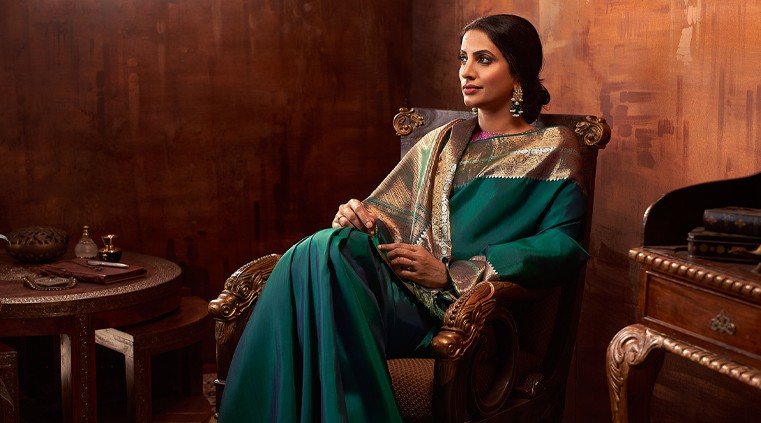
All across the world, the sarees are the oldest and the only existing unstitched garment since the ancient times. These magnificent, timeless saris ultimately make their way into the cherished, exquisite family heirlooms that are passed on to posterity.
Each square inch of this timeless piece of clothing is woven by trained craftsmen drawing inspiration from regional landscapes, art, flora, and fauna. Generally, a sari is six metres long, however, it can extend upto nine metres for certain traditional drapes such as the Maharashtrian kasta style or South Indian madisar style.
No matter, how many new, contemporary styles of dresses have arrived on the fashion scene; nothing can take the place of a sari. After all, saris have always occupied the TOP place in the hearts of Indian people as well as the Indian fashion industry.
The Rich History of Saris
The rich history of sari-like garment/drapery dates back to the ancient Indus Valley Civilisation which flourished during the 2800�1800 BCE in the ancient India. The word �sari� has originated from �satika� in Sanskrit that has been mentioned in the earliest Hindu literature as the women's attire or �strip of cloth.�
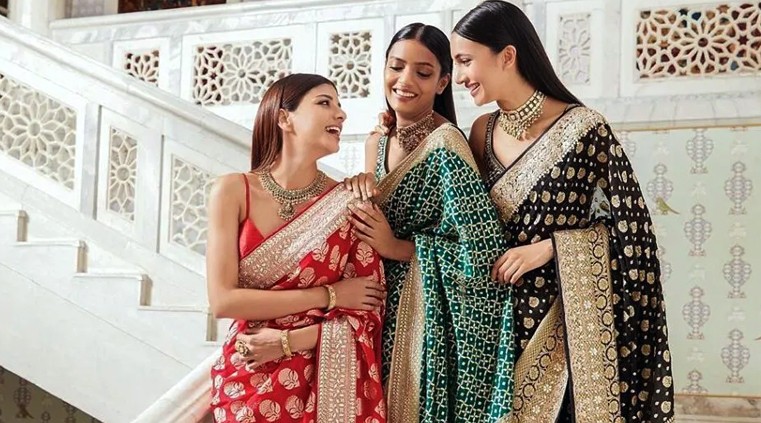
The Humble Beginnings
Every epic journey has its humble beginnings. And sari - the world's oldest unstitched garment, was no different. Cotton was first cultivated and woven in the ancient India dating back to 5 millennium BC. Weavers used dyes such as indigo, turmeric, red madder and lac to create the cotton drape that was worn by women.
Back in the ancient times; women wore a three-piece ensemble (Satika) that comprised of the Antriya - a dhoti-like lower garment, the Stanapatta - a chest band, and the Uttariya - a shawl like veil worn over the head or the shoulder. This three-piece ensemble has found mentions in Sanskrit literature as well as the Buddhist texts written in the Pali language that date back to 6th century BC. The complete three piece ensemble was described as Poshak, the Hindi term that means �complete attire� used in the Vedic period.
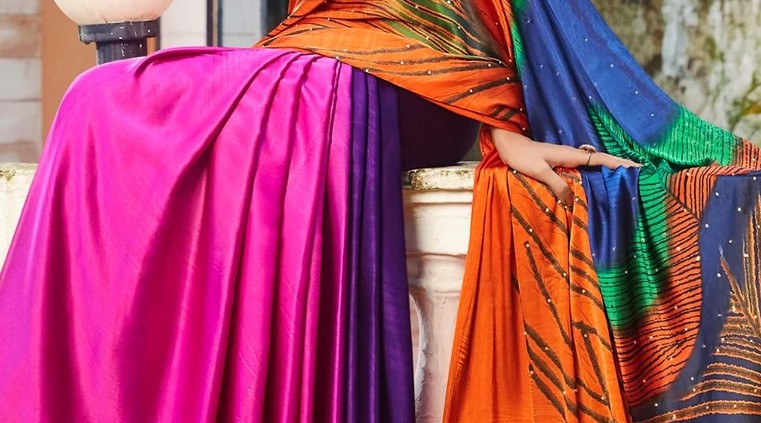
Ancient Antriya bore a resemblance to the dhoti in the "fishtail" version that covered the legs loosely. Antriya further developed into Bhairnivasani skirt, which we call today as the present-day ghagra or lehenga. Uttariya developed into what is known today as dupatta (or ghoonghat) and Stanapatta turned into the choli.
Cut to several centuries later, the quintessential Indian sari is engrained in our rich Indian culture. Saris have evolved over a period of time with each region in the country creating a distinctive design and draping style of its own. Let�s have a look at the variety of saris that are precious, timeless and a must-have for your traditional wardrobe:
Kanjivaram Silk Sari (Kanchipuram)
A rich, traditional saree woven out of the finest mulberry silk threads; Kanjivaram (Kanchipuram) saris are crafted in the Kanchipuram region of Tamil Nadu, India. Kanchipuram saris are worn on wedding occasions with pride by brides in the Southern part of India and are also inseparable part of bridal trousseau. Kanjivaram sari is often compared with the Banarasi Sari for the finest of the silk used and quality.
.jpg)
Some of the specific characteristics of kanjivaram sari include vibrant colours, contrast colour pallu, eye-catching patterns, checks and stripes and the temple borders. As there is a major colour and design differences between the body and the pallu, the weaver weaves both of them independently before combining them.
Intricately crafted with hand, the world-famous kanjivaram sarees often depict the patterns and designs that are inspired by the scriptures in the South Indian temples, regional folklore and natural motifs such as of birds, leaves and animals.
Banarasi Saris
Originating from the Ghats of Varanasi (Banaras); the royal Banarasi saree is an embodiment of elegance, grandeur and sophistication. Crafted by weavers with eloquent gold or silver brocade; Banarasi saris are the finest of saris in the world! In fact, an Indian bride�s trousseau is incomplete without a pure silk Banarasi sari. The fine silk is adorned with the intricate patterns and designs of brocade details and beautiful Zari that are inspired by the Mughal art and architecture.
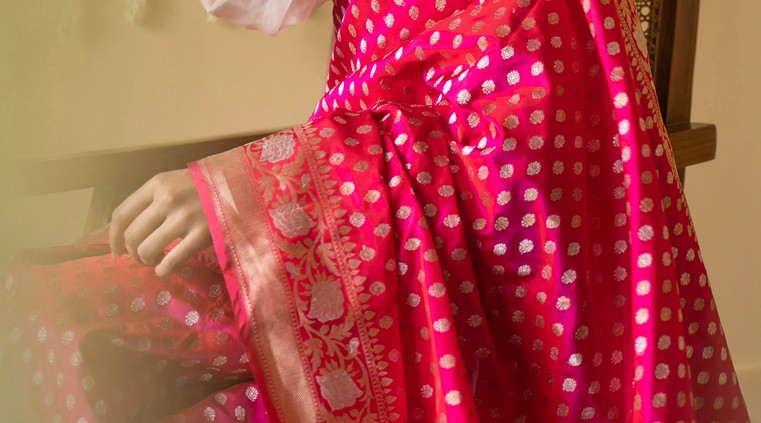
This six yards of royalty is renowned all over the world for its finest silk, ornate detailing, and luxurious embroidery. The special characteristics of Banarasi sari include intricate intertwining of gold and silver threads that create floral and foliate motifs. There are four main varieties of Banarasi sarees depending upon the fabric, which include pure silk (Katan), Shattir, Organza (Kora) with patterns of Zari and silk; and Georgette.
As per the intricate design process; Banarasi sari is further divided into categories such as the traditional pattern of Jangla, Tanchoi that is mostly found in bridal saris, Cutwork, Tissue, Vaskat, and Butidar.
Chanderi Saris
Chanderi saris originated in the small town of the same name in Madhya Pradesh, India, that is famous for its unique and finely woven traditional, handloom saris made of silk and cotton. This traditional, ethnic fabric has been known for the illustrious hand woven Buttis, eye-catching sheer texture, Zari work and the luxurious feel. These light-weight saris are woven with a blend of silk and cotton with exceptional threadwork, extravagant Zari border, geometric motifs, glossy transparency and the alluring large bootis.
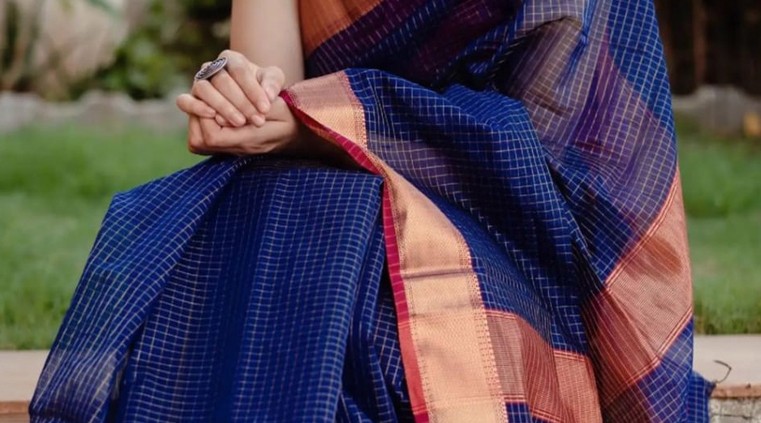
If you are looking for a sari that doesn�t weigh much and also has a luxurious feel; then a Chanderi sari is an excellent choice for you. Available in lovely patterns; Chanderi saris offer the best of both worlds by being lightweight as well as splendid.
Georgette Saris
Georgette saris are renowned for their grace, lightweight, and flowy, easy-to-drape quality. Georgette fabric has evolved from being made from thin silk yarns to a blend of several fibres such as nylon, satin, polyester, viscose and more. As georgette saris are lightweight; they are convenient to wear for long hours and are perfect for the summer season. These saris have a crinkled surface that wraps around the body perfectly.
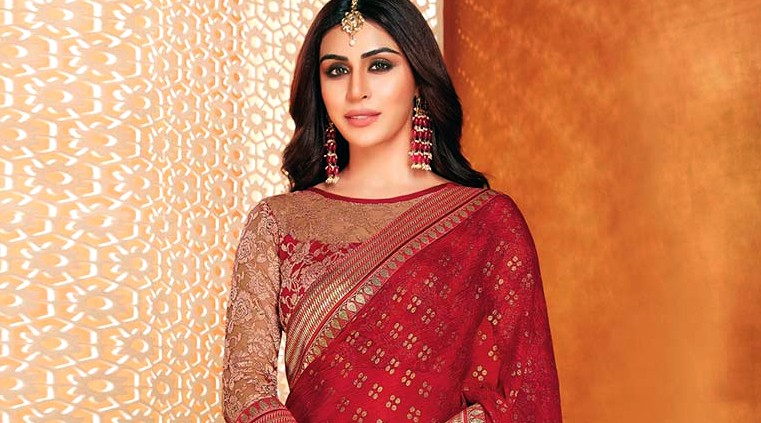
Madhubani Saris
The world-renowned Madhubani paintings depicting the stories from the Ramayana and Mahabharata; two of India's greatest epics, come alive in Madhubani saris. Madhubani folk painting originated from the Madhubani district of the Mithila region of Bihar, India. Skilled artists use their fingers, twigs, nib pens, matchsticks, and brushes, to create the paintings.
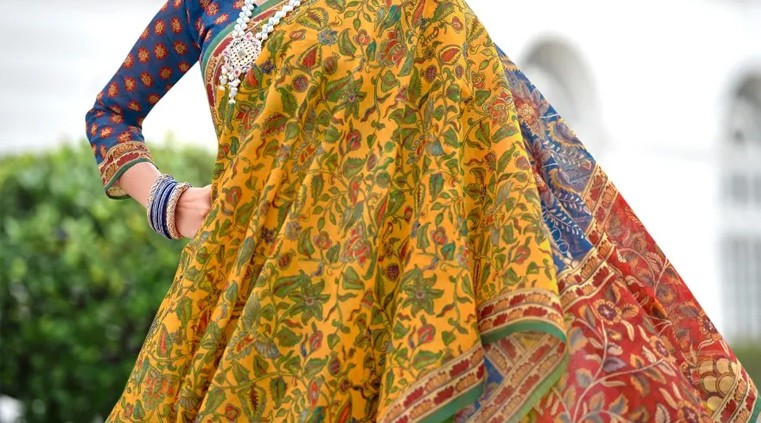
Apart from illustrating mythical tales on the silk and cotton fabric; the trained Madhubani artists also take inspiration from their surroundings and portray nature, people, Deities, royal courts, and weddings using natural dyes such as rice, turmeric, charcoal and sandalwood. In depictions of nature on a Madhubani sari, you can see motifs of fishes, trees, the sun, flowers, and bamboos. There is a certain rustic charisma associated with Madhubani saris that make them so special. Each Madhubani sari is a unique piece of an art that represents the rich art of India!
Maheshwari Saris
Once worn by the ladies of the royal status, Maheshwari saris look graceful in every aspect. Originated in the small, quaint town of Maheshwar in Madhya Pradesh, India; Maheshwari saris are lightweight in nature. These breath-taking Maheshwari saris were conceptualised by the great Maratha Queen Devi Ahilya Bai Holkar in order to provide the means of livelihood to her people in her flourishing kingdom. It is believed that during the reign of the Maratha Queen, Maheshwari saris rose to skyhigh popularity.
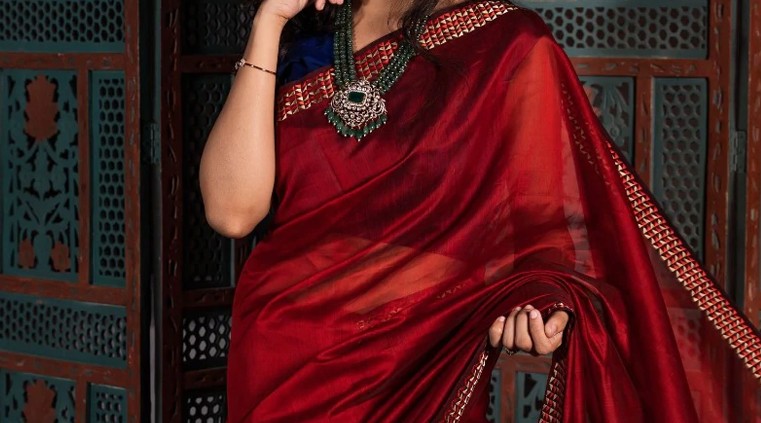
Embellished with delicate layers of Zari work, Maheshwari saris are mostly woven in cotton, silk and cotton blends. What is interesting about Maheshwari sari is that it has reversible border (also known as bugdi) which can be worn on both sides. Maheshwari saris are characterised by a narrow coloured floral zari borders, narrow stripes, small checks and pallu. The pallu would always be distinctive in colour as compared to the colour of the sari.
Bollywood Celebrities Love Sari
A sari has the essence of Indian tradition and culture as well as the glamour and style. From Kareena Kapoor Khan, Priyanka Chopra, Katrina Kaif, Anushka Sharma, Shilpa Shetty, Sonam Kapoor, Shraddha Kapoor, Sonakshi Sinha, Janhvi Kapoor, Aishwarya Rai Bachchan, Madhuri Dixit, Sridevi, to Maliaka Arora; every Bollywood Diva loves donning this fluid garment for red carpet events, movie screenings, weddings, or even at the International Canes Film Festival.
Sonam Kapoor and Deepika Padukone have worn sarees with �lan and pride at the Cannes Red carpet and they looked stunning there. And then there is Bollywood actress Vidya Balan whose love for saris is not hidden from the fashion experts.
A sari is forever. This six/nine yards of stunning beauty will never go out of trend. After all, this versatile piece of clothing allows a woman to experience a red carpet moment of her own every single time she wears it.
Latest Posts
Categories
Tags


 +1-403-351-7777
+1-403-351-7777













